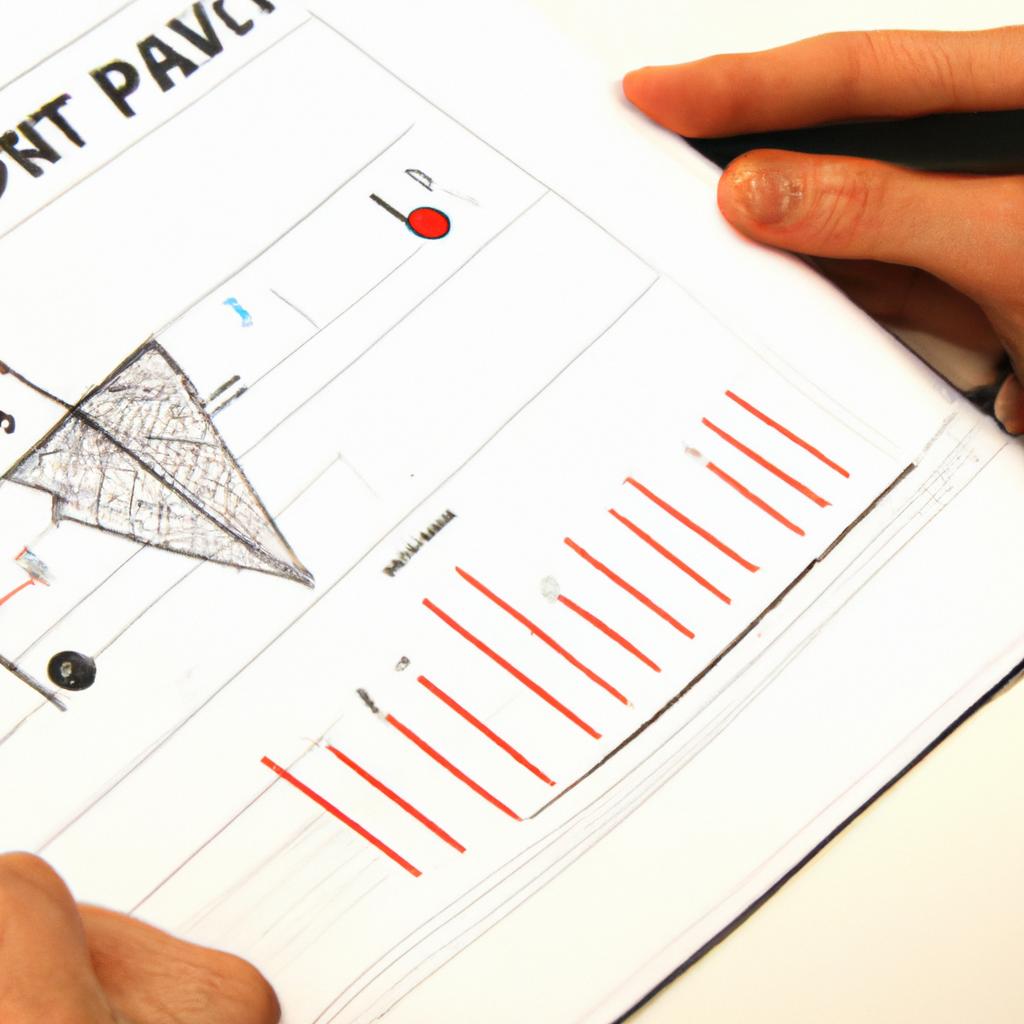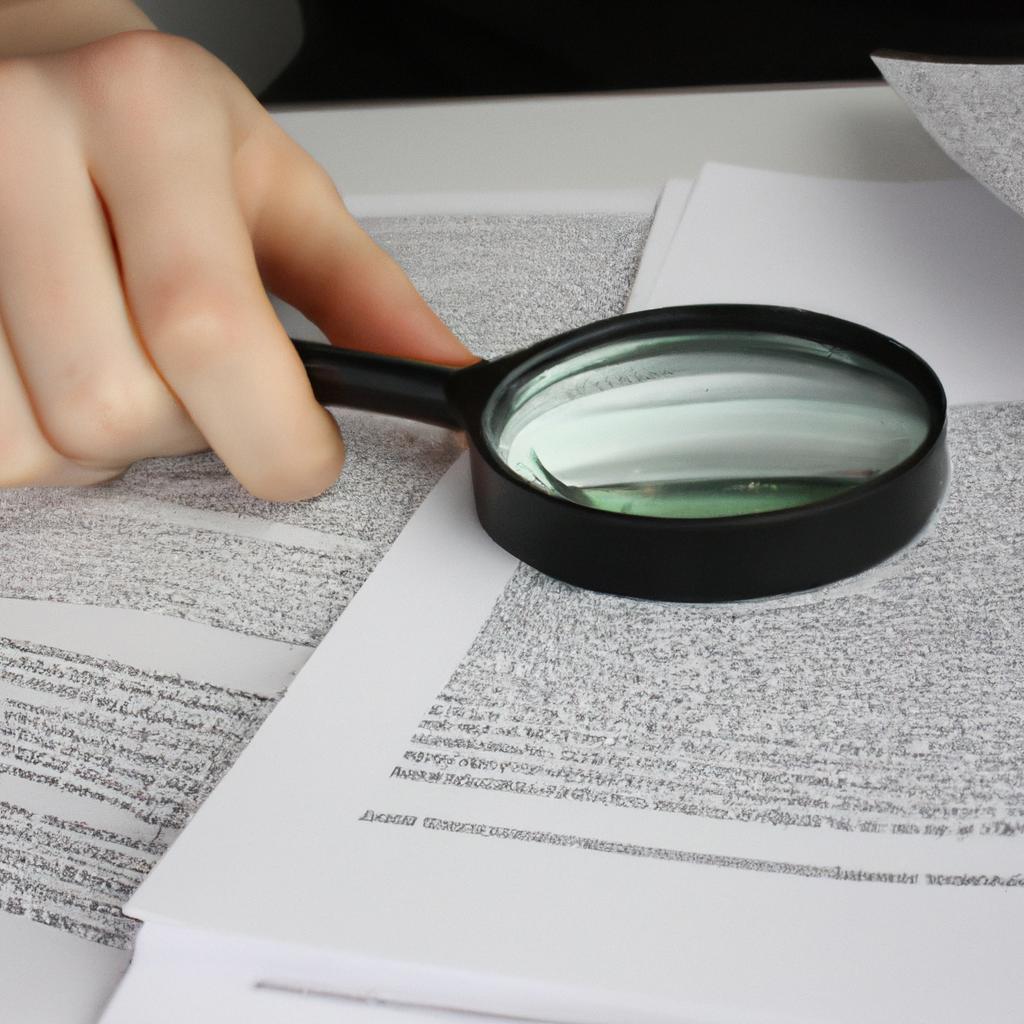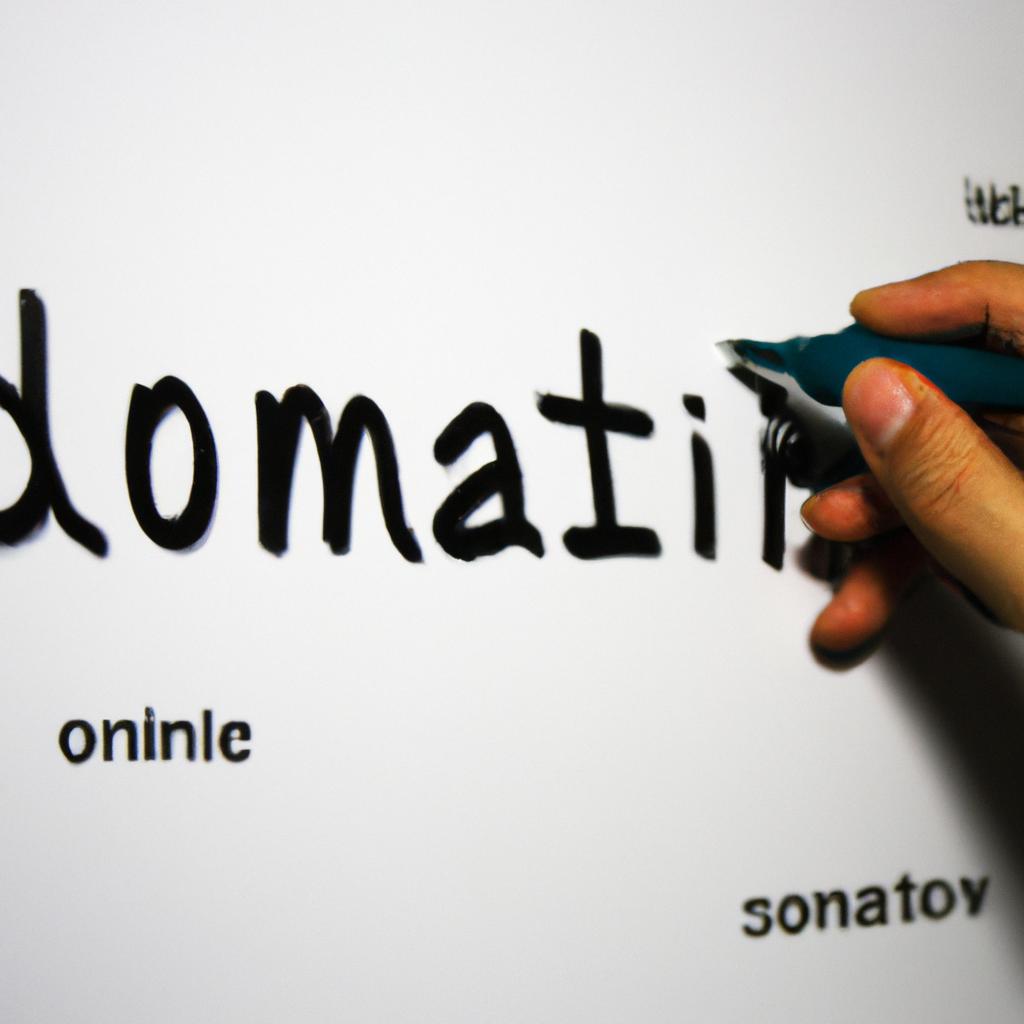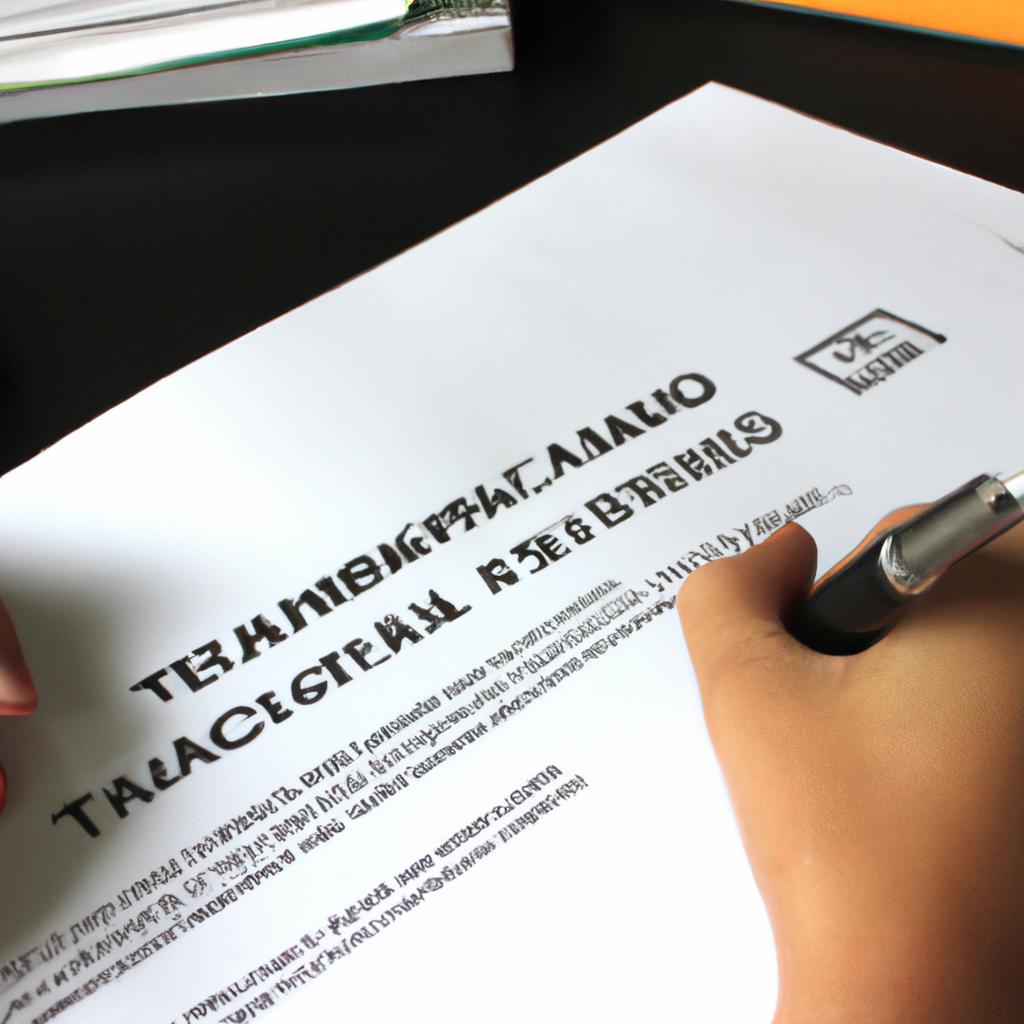Royalty Valuation in Business Appraisal: Intellectual Property Insights

The valuation of intellectual property (IP) assets, particularly in the context of royalty valuations, is a complex and critical process in business appraisal. Royalty valuation involves determining the economic value associated with the use or licensing of IP rights, such as patents, trademarks, copyrights, and trade secrets. This article aims to provide insights into the intricacies involved in royalty valuation within the broader framework of business appraisal.
Consider a hypothetical scenario where a technology company holds several valuable patents for innovative software solutions. The company wishes to license these patents to other businesses operating in related industries. However, before entering into any licensing agreements, it is crucial for both parties involved to accurately assess the fair market value of these patents. In this regard, royalty valuation serves as an indispensable tool that helps quantify the potential financial benefits associated with licensing IP rights. By examining various factors like market demand, competitive landscape, and industry trends, analysts can determine appropriate royalty rates that reflect the true worth of the IP assets being licensed.
Furthermore, understanding how royalties are valued can have significant implications for both buyers and sellers during transactions involving IP assets. For instance, when acquiring a company with substantial patent portfolios or brand recognition through licensing deals, investors need reliable estimates of future royalty streams to make informed investment decisions and determine the appropriate purchase price for the IP assets. On the other hand, sellers of IP assets can leverage royalty valuation to negotiate favorable licensing terms and maximize their returns on investment.
The process of royalty valuation typically involves several steps. Firstly, analysts need to identify comparable licensing agreements in the market to establish a benchmark for royalty rates. These agreements should involve similar IP assets and industries, with consideration given to factors such as exclusivity, territory, duration, and technology advancements.
Once relevant comparables have been identified, adjustments may be made to account for differences in circumstances or terms. For example, if the patents being valued are more technologically advanced or have broader applications compared to the comparables, a higher royalty rate may be justified.
Additionally, analysts must consider the potential risks associated with the IP assets being licensed. This includes evaluating factors such as legal challenges to patent validity, potential infringement claims from competitors, and changes in market demand or technology that could render the IP obsolete. Adjustments may be made to reflect these risks when determining an appropriate royalty rate.
It is important to note that there are different methods available for valuing royalties depending on the specific circumstances of each case. Some commonly used methods include relief from royalty method (which estimates the cost savings achieved by owning rather than licensing), income-based approaches (such as discounted cash flow analysis), and market-based approaches (based on comparable licensing agreements). The selection of an appropriate method will depend on factors like availability of data, complexity of the IP asset, and industry practices.
In conclusion, royalty valuation is a complex process that plays a crucial role in assessing the worth of intellectual property assets during licensing agreements or transactions involving IP rights. By considering various factors and using appropriate valuation methods, analysts can provide reliable estimates of future royalty streams and assist businesses in making informed decisions regarding their IP assets.
Understanding Royalty Valuation
Introduction
Imagine a scenario where Company X, known for its innovative technology solutions, licenses its patented software to Company Y for use in their manufacturing process. In return, Company Y pays a royalty fee to Company X based on the agreed-upon terms of the licensing agreement. This example illustrates the concept of royalty valuation, which plays a crucial role in business appraisal and intellectual property management. In this section, we will delve into the fundamentals of understanding royalty valuation.
Importance of Royalty Valuation
Effective royalty valuation is essential for both licensors and licensees as it determines fair compensation for the use of intellectual property (IP). Licensors seek to maximize their returns by charging appropriate royalties that reflect the value generated by their IP assets. On the other hand, licensees aim to ensure they pay reasonable fees that align with market standards while gaining access to valuable IP rights.
To fully grasp the significance of royalty valuation, consider these key aspects:
- Evaluation: Royalty valuation involves assessing various factors such as market demand, competitive landscape, technological advancements, and potential risks associated with IP infringement.
- Negotiation: A well-executed royalty valuation provides a solid foundation for negotiation between licensor and licensee parties.
- Financial Decision-making: Accurate royalty valuations assist businesses in making informed financial decisions regarding investments in research and development (R&D) activities or acquisitions of new technologies.
- Dispute Resolution: Properly valued royalties can help resolve disputes arising from licensing agreements more effectively through objective assessment methods.
| Importance | Impact |
|---|---|
| Evaluation | – Determines market value |
| – Assesses competitiveness within industry | |
| – Evaluates risk related to IP | |
| Negotiation | – Provides basis for negotiations |
| Financial Decision-making | – Guides R&D investment |
| – Assists in technology acquisition decisions | |
| Dispute Resolution | – Facilitates objective assessment methods |
Understanding the importance of royalty valuation sets the stage for exploring key factors that influence this process. In the subsequent section, we will delve deeper into these factors and their implications on determining fair and reasonable royalties in business appraisals.
Note: The next section titled “Key Factors in Royalty Valuation” will discuss various elements influencing royalty valuations without explicitly stating “step.”
Key Factors in Royalty Valuation
Transitioning from our previous discussion on understanding royalty valuation, we now turn our attention to the key factors that play a crucial role in determining royalty rates. To illustrate these factors, let us consider an example of a fictional company, XYZ Corp., which holds valuable intellectual property rights for a groundbreaking technology.
When appraising the value of XYZ Corp.’s intellectual property, several elements come into play:
-
Industry dynamics and market demand: The first factor to consider is the overall state of the industry in which XYZ Corp. operates. This includes analyzing market trends, competitive forces, and consumer preferences. By understanding the dynamics shaping the industry, appraisers can assess the potential demand for XYZ Corp.’s technology and its associated royalties.
-
Strength of intellectual property: Appraisers must evaluate the strength and uniqueness of XYZ Corp.’s intellectual property rights compared to existing technologies or competitors’ offerings. A strong IP portfolio with robust patents and trademarks enhances the value proposition for licensing agreements and justifies higher royalty rates.
-
Revenue potential: The revenue-generating capabilities of XYZ Corp.’s technology are another critical consideration in royalty valuation. Appraisers analyze projected sales figures, growth prospects, and any anticipated barriers to entry or expansion within the target market. These assessments help determine appropriate royalty rates based on expected financial returns.
-
Negotiated terms: Lastly, specific contractual terms agreed upon between XYZ Corp. and potential licensees significantly impact royalty valuations. Factors such as exclusivity clauses, territory restrictions, sublicensing rights, upfront fees, and ongoing support obligations shape negotiations and ultimately influence royalty rates.
To further emphasize the importance of these factors in royalty valuation methods used by business appraisers today:
- Successful licensing arrangements can lead to substantial profits for both licensors (like XYZ Corp.) and licensees.
- Adequate compensation through fair royalty rates incentivizes innovation while protecting intellectual property holders.
- Determining appropriate royalty rates requires a comprehensive analysis of various market and contractual factors.
The upcoming section will delve into the specific methods employed by appraisers to determine royalty rates, building upon the foundation established in this discussion of key valuation factors. By examining these methods, we can gain further insights into how intellectual property rights are valued within the context of business appraisal practices.
Methods for Determining Royalty Rates
In the previous section, we discussed the key factors that play a crucial role in royalty valuation. Now, let us delve deeper into the methods used for determining royalty rates. To illustrate this, consider a hypothetical scenario involving a technology company that has developed a groundbreaking software application.
There are several approaches to determine an appropriate royalty rate for intellectual property such as patents, trademarks, and copyrights. One commonly employed method is the Comparable License Transactions approach. This involves analyzing similar licensing deals within the industry to identify comparable agreements with known royalty rates. By examining these transactions, analysts can gain insights into prevailing market conditions and benchmarks for royalty rates.
Another method frequently utilized is the Income Approach, which focuses on estimating future cash flows derived from the intellectual property asset being valued. This approach requires forecasting potential revenue streams and applying appropriate discount rates to determine present value. Various factors influence this calculation, including expected sales growth, market demand, competitive landscape, and legal considerations.
Additionally, experts often employ the Relief from Royalty Method (RRM) when valuing intellectual property assets. This technique entails quantifying the cost savings associated with using proprietary rights rather than paying royalties to third parties. It considers both tangible benefits like avoided expenses and intangible benefits such as increased strategic flexibility or reduced business risk.
To provide a comprehensive overview of these methods’ emotional impact on stakeholders involved in royalty valuation processes:
- The Comparable License Transactions approach ensures fairness by benchmarking against industry standards.
- The Income Approach emphasizes long-term financial rewards through accurate forecasting.
- The Relief from Royalty Method highlights cost-saving advantages and enhances decision-making capabilities.
- These methods collectively aim to maximize value creation while mitigating risks inherent in intellectual property transactions.
Table: Methods for Determining Royalty Rates
| Method | Key Features | Emotional Impact |
|---|---|---|
| Comparable License Transactions | Utilizes industry benchmarks to establish fair royalty rates | Ensures fairness and market alignment |
| Income Approach | Focuses on estimating future cash flows and applying appropriate discount rates | Emphasizes long-term financial rewards |
| Relief from Royalty Method (RRM) | Quantifies cost savings associated with using proprietary rights instead of paying royalties | Highlights strategic advantages |
In summary, determining an appropriate royalty rate involves employing various methods that consider prevailing market conditions, future revenue potential, and cost-saving benefits. The use of these methodologies ensures a comprehensive assessment of intellectual property assets’ value, enabling stakeholders to make informed decisions.
Transitioning into the subsequent section about “Challenges in Royalty Valuation,” it is essential to address the complexities inherent in this process. By understanding the hurdles faced by analysts and experts, we can gain further insights into navigating the intricacies of royalty valuation successfully.
Challenges in Royalty Valuation
In the previous section, we discussed various methods used to determine royalty rates in business appraisal. Now, let us delve deeper into the challenges faced during the process of royalty valuation.
Determining an appropriate royalty rate can be a complex task due to several factors that need careful consideration. For instance, market demand plays a crucial role in determining the value of intellectual property (IP). Consider a hypothetical case study where a company develops innovative software and licenses it to other businesses. The royalty rate would depend on factors such as the uniqueness and usefulness of the software, market competition, and potential customer base.
When valuing IP for royalty purposes, appraisers face certain challenges that require them to exercise caution and expertise. These challenges include:
- Lack of comparable transactions: Finding similar IP licensing agreements or sales transactions can be difficult, especially for unique or niche products.
- Uncertainty in forecasting future revenues: Estimating future cash flows generated by licensed IP is inherently uncertain because it depends on various external factors like market trends and technological advancements.
- Differing interpretations of risk: Different parties involved in negotiating a license agreement may have contrasting views on the risks associated with using or commercializing the IP.
- Evolving legal landscape: Changes in patent laws or copyright regulations can significantly impact the value and enforceability of IP rights.
To highlight these challenges further, consider Table 1 below which presents key difficulties encountered when determining royalty rates:
| Challenges | Description |
|---|---|
| Lack of comparables | Difficulty finding similar licensing/sales transactions |
| Forecast uncertainty | Uncertainty surrounding future revenue forecasts |
| Risk divergence | Disagreement among parties regarding risk assessment |
| Legal changes | Impact of evolving legal frameworks on IP rights |
Table 1: Challenges in Determining Royalty Rates
Despite these obstacles, accurate royalty valuation is crucial for businesses to make informed decisions regarding licensing, acquisitions, or investments in IP. By understanding the challenges involved, appraisers can employ appropriate methodologies and techniques to arrive at reliable royalty rates.
Moving forward, we will explore the role of intellectual property in business appraisal and how it contributes to the overall value of a company’s assets. Understanding this relationship is essential for conducting comprehensive and accurate business valuations.
Role of Intellectual Property in Business Appraisal
Having explored the challenges associated with royalty valuation, it is essential to understand the significant role that intellectual property (IP) plays in business appraisal. By examining how IP assets contribute to a company’s overall value, one gains insights into the intricacies involved in accurately determining royalty rates and valuing intangible assets.
Intellectual property, comprising patents, trademarks, copyrights, and trade secrets, represents valuable intangible assets that can significantly impact a firm’s financial performance. For instance, consider a hypothetical case study involving a technology company specializing in innovative software solutions. The organization holds several patents protecting its proprietary technologies, giving them an edge over competitors. These patents not only safeguard their inventions but also serve as potential revenue generators through licensing agreements or enforcing exclusivity rights. This example highlights the pivotal role played by intellectual property rights in shaping market position and profitability.
The importance of accurate royalty valuation cannot be overstated when assessing intellectual property’s contribution to business value. To better comprehend this significance, let us delve into some key aspects:
- Strategic positioning: Accurate valuation enables companies to strategically leverage their IP portfolio for competitive advantage and negotiate favorable licensing terms.
- Investment decisions: Reliable valuation helps investors evaluate opportunities related to IP-intensive businesses.
- Financial reporting: Precise assessment assists organizations in presenting fair values of intangible assets on balance sheets.
- Legal disputes: Accurate royalty valuation facilitates informed decision-making during litigation or arbitration proceedings.
To illustrate further the multifaceted nature of royalty valuation within business appraisal, we present a table outlining various factors influencing IP value:
| Factors Influencing IP Value | Examples |
|---|---|
| Market demand | Customer acquisition rate |
| Competitive landscape | Number of direct competitors |
| Technological advancements | R&D investment |
| Industry growth potential | Market size |
This table serves as a reminder that royalty valuation extends beyond the intrinsic value of IP assets. It encompasses external factors crucial for comprehensively evaluating intellectual property’s significance in business appraisal.
In conclusion, understanding the role of intellectual property is fundamental to accurately valuing royalties and assessing intangible assets’ contribution to overall business value. By recognizing how IP rights shape market position, profitability, and strategic decision-making, one can navigate the complexities involved in determining fair royalty rates. In the subsequent section, we will explore the benefits that arise from precise royalty valuation.
Transition into the subsequent section:
With a clear understanding of the importance of accurate royalty valuation, it becomes evident that businesses stand to gain significant advantages by leveraging this process effectively. The next section will delve into these benefits further.
Benefits of Accurate Royalty Valuation
Having established the pivotal role played by intellectual property (IP) in business appraisal, we now turn our attention to exploring the substantial benefits that can be derived from accurate royalty valuation. By understanding how IP assets are valued and monetized, businesses gain valuable insights into maximizing their potential for growth and profitability.
Section – Benefits of Accurate Royalty Valuation:
Accurate royalty valuation provides businesses with a multitude of advantages that extend beyond determining fair market value. To illustrate these benefits, let us consider the hypothetical case study of Company XYZ, a technology-based firm specializing in software development. Through an astute analysis of their IP portfolio, Company XYZ was able to identify several key opportunities for leveraging their intangible assets effectively.
Firstly, precise royalty valuation empowers companies like XYZ to ascertain appropriate licensing fees when entering into agreements with external entities. This ensures that they receive fair compensation for granting others access to their proprietary technologies or creative works. Moreover, it enables them to negotiate favorable terms while safeguarding against undervaluing their IP assets.
The significance of accurate royalty valuation extends beyond licensing negotiations alone. Let’s explore some additional advantages through a bullet point list below:
- Enhanced strategic decision-making capabilities
- Improved risk management and asset protection
- Increased attractiveness to investors and potential partners
- Greater transparency and credibility in financial reporting
Furthermore, businesses can harness the power of accurate royalty valuation through comprehensive data analysis and comparison across industries. The table below highlights a comparative overview between different sectors regarding average royalty rates as a percentage of revenue generated:
| Industry | Average Royalty Rate (%) |
|---|---|
| Technology | 5% |
| Pharmaceuticals | 10% |
| Consumer Goods | 2.5% |
| Entertainment | 15% |
By exploring such industry benchmarks, companies gain insights into the competitiveness of their royalty rates and can make informed decisions to optimize their IP monetization strategies.
In conclusion, accurate royalty valuation in business appraisal provides numerous advantages for companies seeking to unlock the full potential of their intellectual property assets. By determining fair market value, enabling effective licensing negotiations, and leveraging valuable data analysis, businesses can enhance strategic decision-making capabilities while attracting investors and protecting their intangible assets. The ability to evaluate royalties accurately is an essential tool that empowers enterprises across various sectors to thrive in a rapidly evolving global marketplace.






